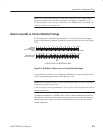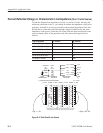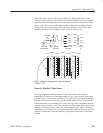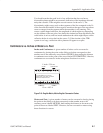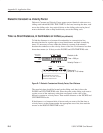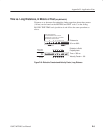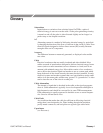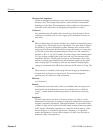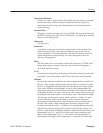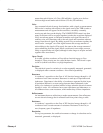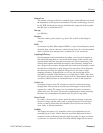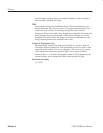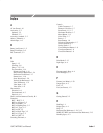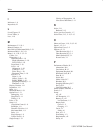
1502C MTDR User Manual
Glossary–1
Glossary
Aberrations
Imperfections or variations from a desired signal. In TDRs, a pulse of
electrical energy is sent out over the cable. As the pulse-generating circuitry
is turned on and off, the pulse is often distorted slightly and no longer is a
perfect step or sine-shaped waveform.
AC
Alternating current is a method of delivering electrical energy by periodical-
ly changing the direction of the flow of electrons in the circuit or cable. Even
electrical signals designed to deliver direct current (DC) usually fluctuate
enough to have an AC component.
Accuracy
The difference between a measured, generated, or displayed value and the
true value.
Cable
Electrical conductors that are usually insulated and often shielded. Most
cables are made of metal and are designed to deliver electrical energy from a
source (such as a radio transmitter) across a distance to a load (such as an
antenna) with minimal energy loss. Most cables consist of two conductors,
one to deliver the electrical signal and another to act as a return path, which
keeps both ends of the circuit at nearly the same electrical potential. In early
electrical systems and modern systems that over long distances use the earth
and/or air as the return path, and the term “ground” or “ground wire” is often
used to describe one of the wires in a cable pair.
Cable Attenuation
The amount of signal that is absorbed in the cable as the signal propagates
down it. Cable attenuation is typically low at low frequencies and higher at
high frequencies and should be corrected for in some TDR measurements.
Cable attenuation is usually expressed in decibels at one or several frequen-
cies. See also: dB and Series Loss.
Cable Fault
Any condition that makes the cable less efficient at delivering electrical
energy than it was designed to be. Water leaking through the insulation,
poorly mated connectors, and bad splices are typical types cable faults.
Capacitance
(see Reactance)



